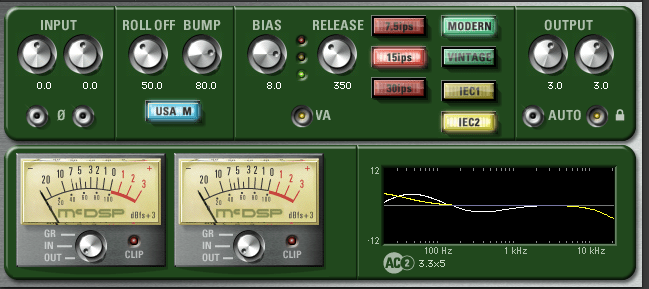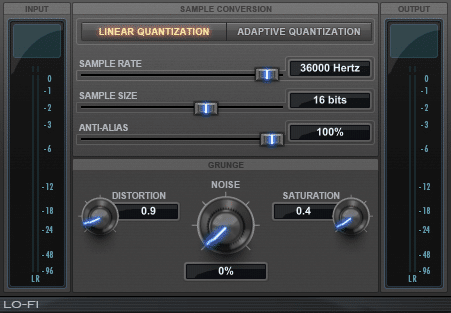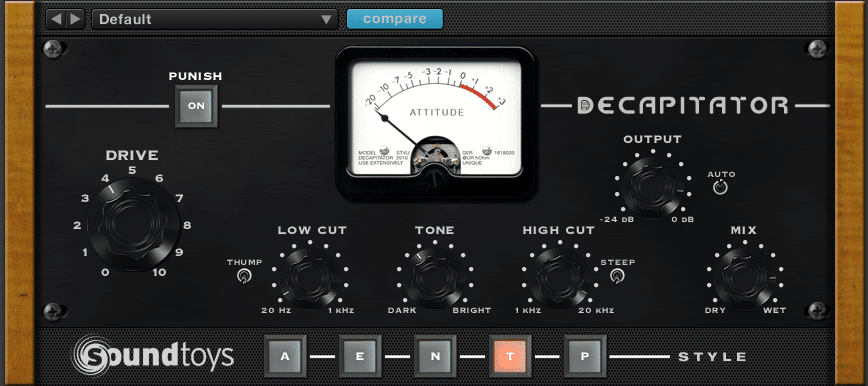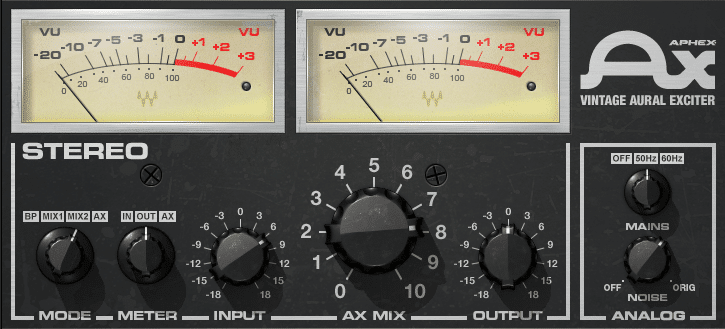by Will Benoit
One of the most important parts in the process of composing production music is keeping your tracks fresh and exciting after turning out so many pieces of music. But to me, the most important part is getting your tracks to sound consistent within the aesthetic of the genre you are writing in. Whether it’s EDM, Hip Hop, Rock, or any other genre, the song needs to sound a certain way in order to feel authentic.
most important part is getting your tracks to sound consistent within the aesthetic of the genre you are writing in. Whether it’s EDM, Hip Hop, Rock, or any other genre, the song needs to sound a certain way in order to feel authentic.
I’m going to explore these elusive concepts and provide some examples that help me think about my productions in new ways; trying to make the tracks exciting for the listener, and communicating a sense of authenticity throughout. By the end you’ll have a few new ways to approach production, and hopefully you’ll be on the path to discovering your own new, legitimate and compelling sounds.
Understanding The “X Factor” In Your Tracks
I’ve seen a lot of articles that say “you should only be creating tracks in styles that you are  familiar and comfortable with”. I would argue that we are told this because we have an innate understanding of the types of sounds that exist in the music we listen to regularly. If you listen to Rock music, you know how the drums interact with the bass guitar, and how the guitars need to sit in order to leave room for the vocals. Even if every track you write isn’t a perfect balance, you probably still understand what you’re trying to achieve; you perceive the aesthetic sensibility because you’ve spent so much time in that listening space.
familiar and comfortable with”. I would argue that we are told this because we have an innate understanding of the types of sounds that exist in the music we listen to regularly. If you listen to Rock music, you know how the drums interact with the bass guitar, and how the guitars need to sit in order to leave room for the vocals. Even if every track you write isn’t a perfect balance, you probably still understand what you’re trying to achieve; you perceive the aesthetic sensibility because you’ve spent so much time in that listening space.
Often the client, the music supervisor – or maybe even you – might not be able to put that into words. It’s just a feeling you get when you hear a finished track that works. The ability to recognize “what goes where” is part of the X factor that can help your tracks stand out as authentic, and that all starts with having the right sounds happening in the right places.
How To Find Authentic Sounds: Building The Right Tool Box
Sometimes you’ll be lucky enough to get a few examples of what the client is looking for, or maybe you’ve decided to write a track in a specific genre. Either way, we’re going to focus in on a few tracks at a time to understand what elements and instrumentation we need for the production. For this example, I’m going to use mid 90’s Hip Hop so I need to consider how to build the right tool box that will serve the genre, in that time period.
I just Googled “90’s Hip Hop” and here are the first eight tracks to come up:
Nas – “The World Is Yours”
Warren G – “Regulate”
Wu-Tang Clan – “CREAM”
Ol’ Dirty Bastard – “Shimmy Shimmy Ya’
Salt-N-Pepa – “Let’s Talk About Sex”
Dr Dre – “Nuthin But A G’ Thang”
Jay Z – “Hard Knock Life”
Beastie Boys – “Sabotage”
Now pick three and make a list of what instruments are used in them. You might be able to pick them out by ear, but if not, Google the artist, the song, or the producer, and you should be able to find what instruments they used pretty easily. Of course, if you’re already familiar with a genre, you can skip this step – but my point here is that as you approach listening and then composing this way, you can develop a tool box for more and more diverse genres.
For this example, a lot of the production in these songs came from sampling music from the 1970’s and loading clips and melodies into an MPC sampler. Yo u can hear sampled drums, bass, electric guitar, horns, and organs. Some of the tracks add synths like a Minimoog. Now make a list and find the common elements that exist in all 3 of your reference tracks.
u can hear sampled drums, bass, electric guitar, horns, and organs. Some of the tracks add synths like a Minimoog. Now make a list and find the common elements that exist in all 3 of your reference tracks.
Tempo and feel are two other important elements to keep in mind. “The World is Yours” is around 84 BPM, “Regulate” is about 96 BPM and “CREAM” is 92 BPM. So if I were trying to make a track similar to those, I would start working at 90-92 BPM, and now I know that I can adjust the tempo up or down by a few BPM and I’ll still be in the right area feel wise. Listen to where the snare drum is – what kind of kick drum pattern is happening? Where are the accents? These few simple “cheats” will go a long way into making your tracks feel more authentic.
Vintage Emulation Using Gain, Bit Crushers, Pitch Shifting And Whatever Else You Can Find
The production on most of these songs is much dirtier than the slick productions of today. I chose this era of Hip Hop because these are great examples of successful productions that don’t have much gloss at all. So these techniques can apply to all kinds of music, and might go against what you would normally do to a track – we are going to dirty your sound. This is something that is missing in a lot of production music: If you are trying to make a track that sounds like something that was made before the mid 2000’s, you should be willing to go the extra step so it doesn’t sound like it was produced today. Instead of buying sample libraries that may or may not actually be very authentic, there are some simple techniques we can use to enhance the character of your sounds.
As we all know, we can’t lift samples for production music, so it’s our job to make as realistic sounding “samples” as we can. If you are making retro Hip Hop, you can still use hi-fi samples of horns, organs, etc from Kontakt libraries, but we’ll need to print and loop some phrases, cut them up, and add some grit.
1) In Pro Tools, we can use the factory “Lo-Fi” plug in to add dimension and character to individual tracks. For anything even remotely retro sounding I suggest turning the distortion up to 1 or 2, making the sample size 16 bit – most tracks from the mid nineties were sampled at 16 bit, so this is an easy way to get some authenticity – and don’t be afraid to play with the sample rate and saturation as well. This can make your samples murky quick, but it’s also a great way to get some gritty sounds with some real attitude.
Of course there are lots of plug ins that add color, harmonic overtones and distortion so don’t be afraid to play with them. One of my favorites is Soundtoys Little Radiator which provides instant “vibe”.
2) Analog emulators like McDSP’s Analog Channel, or Soundtoys Decapitator can add lots of color too. You can use these types of plug ins to give your new “samples” a really dark, vintage sound. For bass instruments that will give you some of that round fatness that might be missing from your tracks, and for leads, if you add another layer of EQ – cut off all the low end mud and add LOTS of top end you’ll get a different type of – hopefully less digital – sparkle to your tracks. If you listen to some of these mid nineties productions, they sample lo fi albums and then have to add back in the brightness later during mixing, so that’s what you should do too. If that sounds counter-intuitive, just try  it, you’ll likely be surprised by the results. Waves “Vintage Aural Exciter” is a fantastic plug in for this.
it, you’ll likely be surprised by the results. Waves “Vintage Aural Exciter” is a fantastic plug in for this.
3) Another trick is taking your new samples and pitch shifting them. If you create a MIDI bass line, or if you are recording a live bass guitar, print or play the part a step too high or too low and then pitch shift the audio back into the right key using a plug in. This works on lots of instruments of course, but I find it to be really convincing for bass lines.
4) If you still feel like your track is missing the X Factor and don’t have a deadline in 4 hours, I always recommend taking the time to get your “in the box” elements “out of the box”. I’ve had incredible results running drums and bass samples through a cassette deck. You don’t need to record to tape, just arm the tape deck to record and run signal through it. The hotter you hit the tape head, the dirtier it gets. I’ve found old Radio Shack mixers that I’ve used on drum samples that can sound great on their own, or if you blend it back in with the clean signal can give you really unique results. Guitar pedals, cheap compressors, tape recorders of all kinds – pretty much any piece of gear that you can pass signal through can give you some interesting sounds that can add character to a track. A few dollars at the thrift store and you might discover a new signature sound that fits right into whatever aesthetic you are trying to achieve. Remember, it wasn’t that long ago that a lot of artists were still using these old, quirky pieces of gear to make records out of necessity, so don’t discount what producers before you were forced to use just because you have an entire world of plug ins at your fingertips.
Getting Authentic Drum Sounds
I could write another entire article about how important drum sounds are to the aesthetic of a recording. I’ve seen people trying to use modern EDM samples in rock songs, and rock drum samples in EDM songs. Unless you are specifically trying to make a hybrid track, it’s better to use a reference and try to find something that sits with the genre of music you are making.
 Listen to the drum sounds in the tracks you are trying to emulate. Are they live drums? can you hear lots of natural ambience or is it a close, tight sound? Added reverb or dry? Are the drums sampled and looped or played live? Continuing with our example of 90’s Hip Hop we know that there is lots of sampling from 1970’s records, and usually the addition of one shot samples from the MPC layered on top. In approaching this type of sound, I’ll normally pull up a drum sampler like Native Instruments Battery and find a preset that has sounds similar to what my reference might have used. From there I typically add some more live sounding loops with Addictive Drums, using a “vintage” or “funk” preset and adjust the room mics from tight to big, again based on the reference track.
Listen to the drum sounds in the tracks you are trying to emulate. Are they live drums? can you hear lots of natural ambience or is it a close, tight sound? Added reverb or dry? Are the drums sampled and looped or played live? Continuing with our example of 90’s Hip Hop we know that there is lots of sampling from 1970’s records, and usually the addition of one shot samples from the MPC layered on top. In approaching this type of sound, I’ll normally pull up a drum sampler like Native Instruments Battery and find a preset that has sounds similar to what my reference might have used. From there I typically add some more live sounding loops with Addictive Drums, using a “vintage” or “funk” preset and adjust the room mics from tight to big, again based on the reference track.
From there we can refer back to the vintage emulation section; adding a light distortion, bit crushing your loops down to 16 bit and playing with the sample rate will get you authentic results with a little bit of work.
Wrapping Up
Some of the ideas I’ve written about here are really simple, but it’s my hope that they will open up your thinking to try some new techniques. I like the idea of using this approach of listening and producing music to open up your influence pool and incorporate some new ideas into your tool box. Reference tracks that you might not otherwise listen to, do the research to find out where the sounds you hear came from, and experiment with different types of simple effects to give your tracks unique character. It’s always difficult to achieve authentic sounding productions, but when we’re able to create something that has that X factor in it, music supervisors will take note, even if they aren’t sure what it is they like so much. Being able to create that type of inexplicable feel is part of what makes us better producers.
Wow…I wish I would’ve saw this article about 2 months ago. I just released two songs that have a vintage 70’s style sound. That was the sound I was going for when I composed the pieces, and when I played them, everybody instantly replied it was something from the 70’s. So I got the desired effect.
But after reading this article, now I have more information, and knowledge, that will hopefully make my creating process more thorough.
I’m not too big of a fan of today’s music style. I try, but I just can’t flow with a lot of it. I’m a huge fan of 90’s hip hop, and especially music from the 60’s and 70’s. but now I’m ready to dive in and experiment with more modern sounds and see if I can keep things modern but give it that vintage flavor.